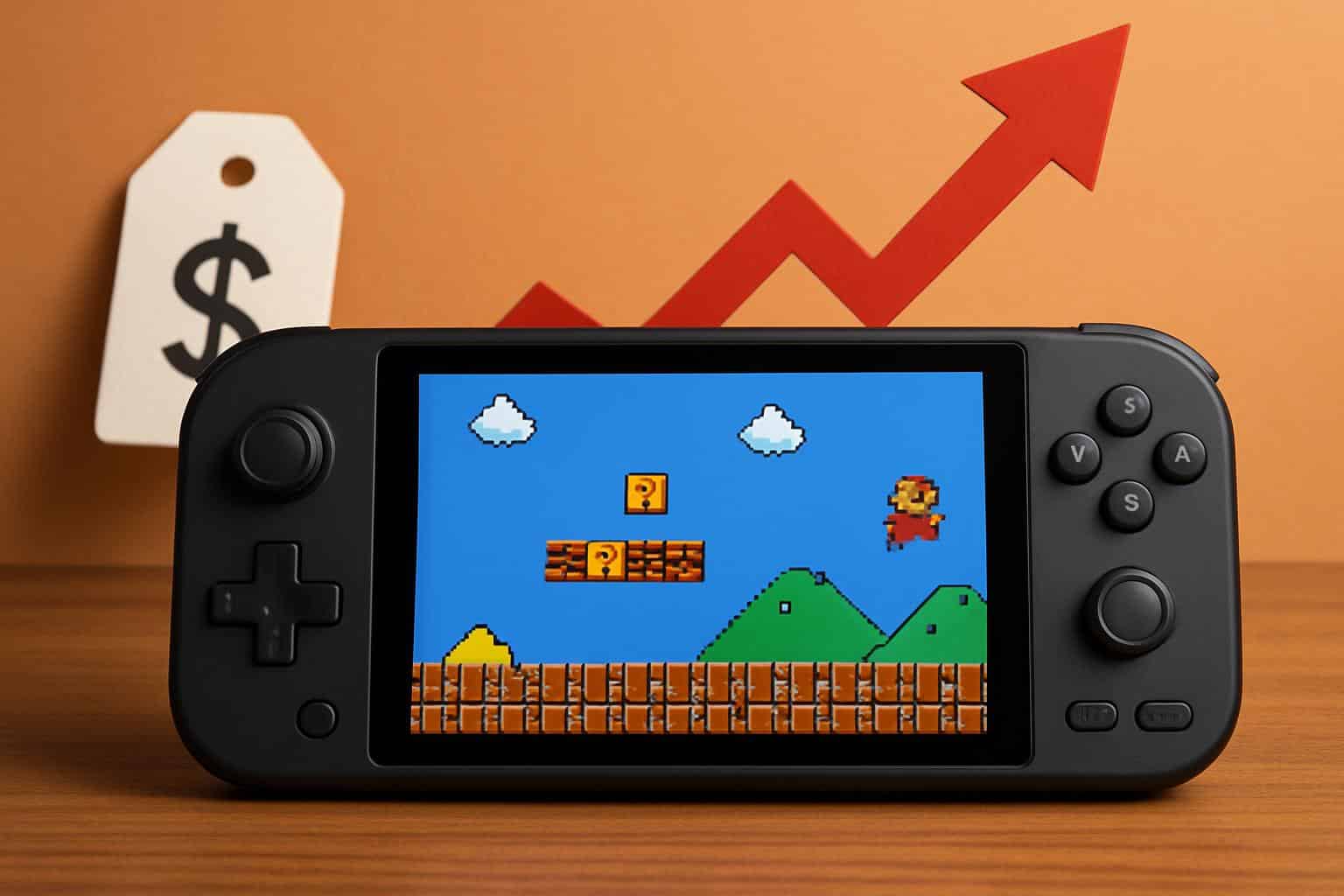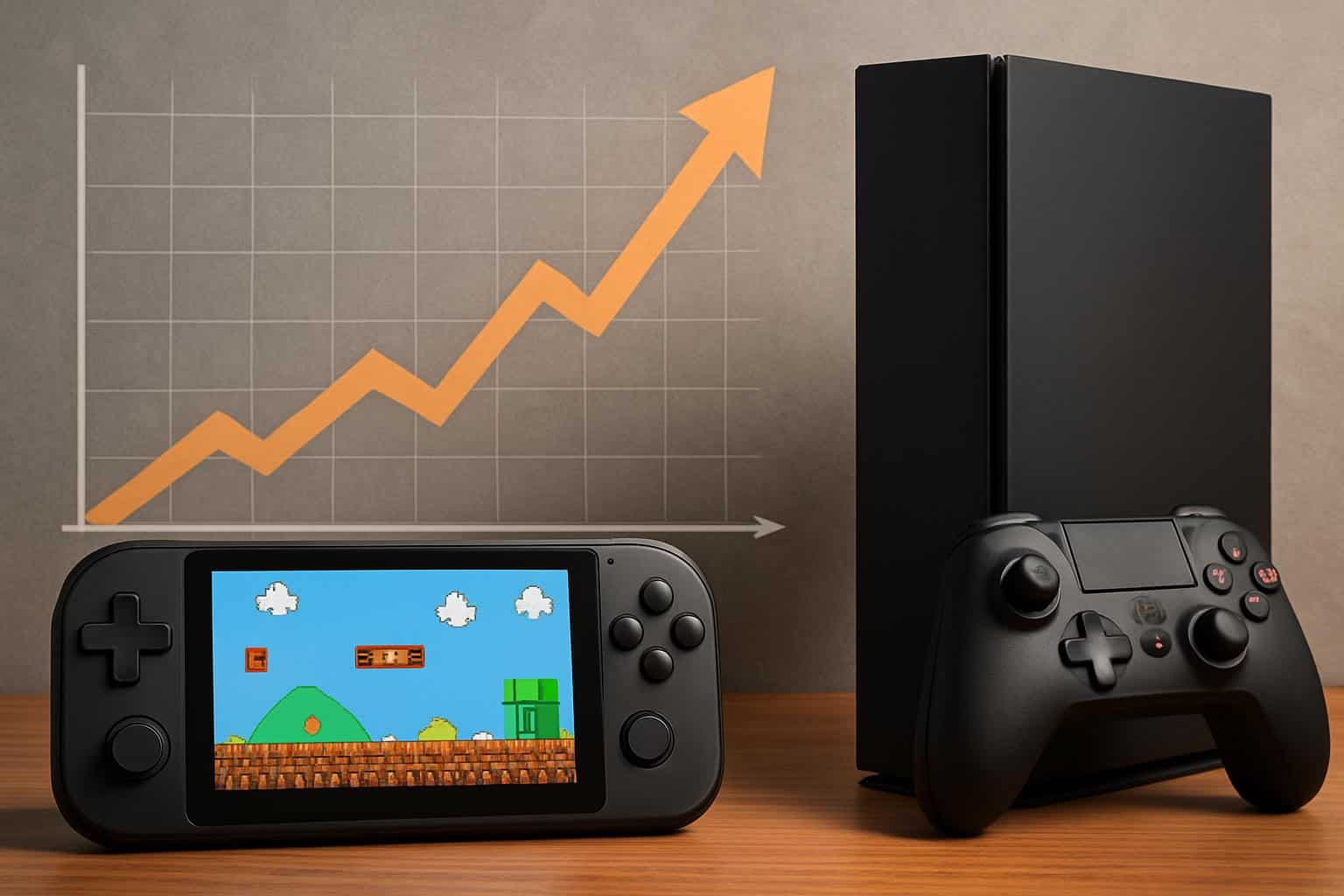Game consoles have been edging toward luxury status, and it’s shifting how lots of us play. Hardware sticker shock, pricier first‑party games and increasing subscription costs have made the traditional path to console ownership a harder sell. Within that framework, emulation handhelds based on Android have morphed from niche oddities to flat-out killer everyday carriers.
These are not just systems you’ll enjoy admiring on a shelf.

They’re a compromise between soulful, nostalgic comfort food and crisp, fast convenience, frequently at a fraction of the cost of newer console ecosystems. That combination is hard to overlook when budgets are a concern.
Why Console Prices Just Keep Going Up Over Time
Big‑three strategies have shifted. But an Ars Technica review of inflation-adjusted console prices through history found that consoles released any time prior to 2016 tended to drop to half of their launch price within three years or so; even the most recent generations hovered more around “launch pricing” or below up into very late in a console cycle, still holding about 85% of their initial costs. It can be seen across hardware, games and services.
Flagship consoles have come out at $499 and have enjoyed relatively few discounts, while premium controllers now easily surpass the $150 mark. The baseline for new AAA games on consoles has largely shifted to $70, and major subscriptions have increased in price, Microsoft and Sony having both raised prices in recent periods. Add in inflation and slower price declines, and “waiting for a deal” goes only so far these days.
Circana’s retail tracking has also revealed just how often console buyers stack the costs: extra storage, second controllers, online memberships. And even if the box price remains constant, total cost of ownership continues creeping upward.
The Quiet Boom of Emulation Handhelds, Explained
Meanwhile, we’ve quickly seen Android-powered handhelds like those from Retroid, ANBERNIC, AYN and now AYANEO coming of age. Even the lowest end $100 entry‑level devices can do near‑perfect emulation up through 16‑bit/PS1 systems, and many of them handle PSP/Dreamcast just fine. Get to, say, $120–$180 and you’re in reasonable PS2 and GameCube territory for a large portion of the library.
Mid‑range and high‑end handhelds slide in at around $200–$400, frequently with similar mobile chips to recent flagship phones. Things in that class — the Retroid Pocket, ANBERNIC RG series, and the AYN Odin and AYANEO Pocket Air lines — can emulate some of the choicest emulators available pretty easily power-wise and even upscale elderly games gloriously whilst managing native Android titles no sweat at all.
Crucially, these machines have matured in the ways that matter for daily play: brighter OLED and IPS displays, hall‑effect sticks to quell drift, improved thermals, thoughtful ergonomics.
They seem less like tinkerer toys and more like dependable pals.

What You Can Play and How Well on These Devices
The coverage for nostalgia is astounding. 8‑bit to 32‑bit consoles are pretty much a non-issue on anything half-decent so long as you’re not trying something ludicrous, and even PS2 to GameCube/Wii, there’s fairly widespread ability to play through mid‑range hardware at sane settings. Even portable systems, such as the PSP, DS and 3DS, perform admirably, consistently offering higher resolution upscaling that can make those classic games feel new again.
It comes with Android’s own library, which sweetens the deal. The Final Fantasy Pixel Remaster series from Square Enix, Chrono Trigger, early Sonic games and premium indie darlings all run great with physical controls. And on PC libraries, in-home streaming through Steam Link, Moonlight or Sunshine can turn a home rig into a handheld console without the subscription tax. (And, if you’re brave, Wine/Box64‑based utilities can run a subset of Windows titles locally on more powerful Android handhelds — compatibility and optimization differ by title.)
Before we dive in, some legal warnings: emulation is not illegal, but downloading certain game files is. While it’s still possible to do so (at a cost), this app emulates the technology itself rather than cataloging every single game that runs on its devices.
Preservationist groups and the Library of Congress offer some legal carve-outs for archival use, but if you want to play it safe with your personal library, just dump your own games and firmware.
The Numbers Favor Handhelds for Budget-Minded Gamers
The economic case is straightforward. The former can be cheaper than a single high-end console bundle to purchase, and in practice replace multiple repetitive costs. PC games have always dropped deeper and faster than on consoles: Steam and GOG’s seasonal jamborees see large releases cut by 30–80 percent, while Epic’s intermittent vouchers make backlogs swell fast. That rhythm of sales turns a $200–$300 handheld plus the occasional game sale into more of a long‑term deal.
Subscriptions muddy the waters when it comes to consoles. Recent price hikes to Game Pass and premium online tiers add an annual charge just to see if anything in a feature or content catalog interests you. Everyone knows opting out and buying PC titles during sales can be WAY cheaper over the same period.
Not a Consoles‑Are‑Dead Argument, Just New Math
Flagship hardware continues to deliver buttery-smooth first‑party showcases and an easy couch experience. But the calculus shifts as prices rise. These days, emulation handhelds can do the classic system comfort grippers (in addition to a rich library of Android games), top‑notch streaming, and even semi-functional Windows — all in a portable form factor.
For players who prioritize affordability, portability and ownership, the handheld road has sneaked up to quietly become the rational default. While console prices rise, the solution isn’t to quit gaming — but to select the hardware that stretches your library and your dollar the farthest.

